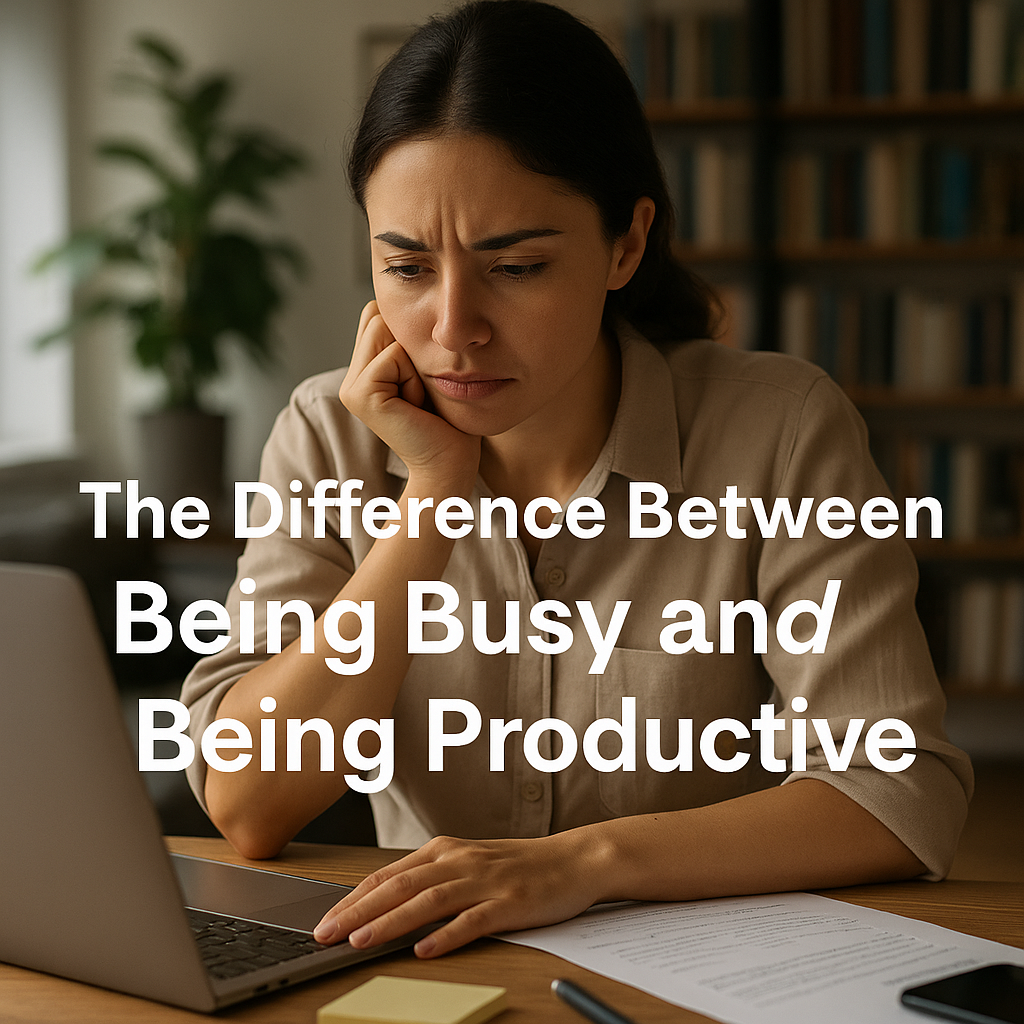In today’s fast-paced world, many people wear “being busy” like a badge of honor. But busyness doesn’t always equal progress. You can spend an entire day rushing from task to task and still feel like you’ve achieved nothing meaningful.
In this article, you’ll learn how to distinguish between being busy and being truly productive—and how to shift your mindset to focus on what really matters.
What Does It Mean to Be Busy?
Being busy often means:
- Constant multitasking
- Long to-do lists
- Responding reactively to emails and messages
- Feeling overwhelmed but not fulfilled
- Saying yes to everything
Busyness can give the illusion of progress, but without intentional focus, it often leads to burnout, distraction, and unproductive effort.
What Is Real Productivity?
Productivity is about working on the right things—not just more things.
Productive people:
- Have clear goals
- Focus on outcomes, not activity
- Prioritize tasks that align with their purpose
- Schedule time for deep, uninterrupted work
- Know when to rest and recharge
They create meaningful progress with less noise and more intention.
1. Measure Outcomes, Not Hours
Busy people ask:
“How long did I work today?”
Productive people ask:
“What did I actually accomplish today?”
Instead of tracking hours worked, track:
- Tasks completed that align with your key goals
- Decisions made that removed roadblocks
- Progress toward outcomes, not just checklists
Time spent does not always equal value created.
2. Prioritize High-Impact Tasks
Not all tasks are equal. Answering emails might feel urgent, but working on your most important project has a bigger long-term impact.
Use the Eisenhower Matrix to sort your tasks:
| Urgent | Not Urgent |
|---|---|
| Important | Do it now (focus here) |
| Not Important | Delegate if possible |
Stay focused on what moves the needle.
3. Stop Glorifying Multitasking
Multitasking reduces cognitive performance. It makes you feel like you’re doing more, but you’re actually switching between tasks inefficiently.
Instead:
- Work in time blocks (25–60 minutes)
- Focus on one task at a time
- Keep your workspace distraction-free
Quality of work improves when your mind is present.
4. Learn to Say “No” Strategically
Busy people say “yes” to everything. Productive people say “yes” with intention and “no” with clarity.
Before committing, ask:
- Does this align with my goals?
- Am I saying yes out of guilt or fear?
- What will I have to say no to if I take this on?
Protect your time like it’s your most valuable asset—because it is.
5. Schedule Breaks and Recovery Time
Busyness often leads to exhaustion. Productivity, on the other hand, includes rest as part of the strategy.
- Take short breaks every 60–90 minutes
- Step away from screens during lunch
- Schedule buffer time between meetings
- Get enough sleep to restore focus and creativity
Burnout doesn’t mean you’re strong—it means your system needs a reset.
6. Reflect Weekly, Not Just Daily
At the end of the week, ask:
- What did I really accomplish?
- What tasks added the most value?
- What can I eliminate or delegate next week?
This reflection builds awareness and helps you continuously refine your workflow.
Final Thought: Choose Meaning Over Motion
Being busy might make you look productive, but it won’t make you feel fulfilled. True productivity isn’t about speed or volume—it’s about impact.
Every time you pause to ask, “Is this meaningful?” you reclaim your time, focus, and energy.
So the next time your calendar is full or your inbox is overflowing, stop and ask yourself:
Am I being busy—or am I being productive?

